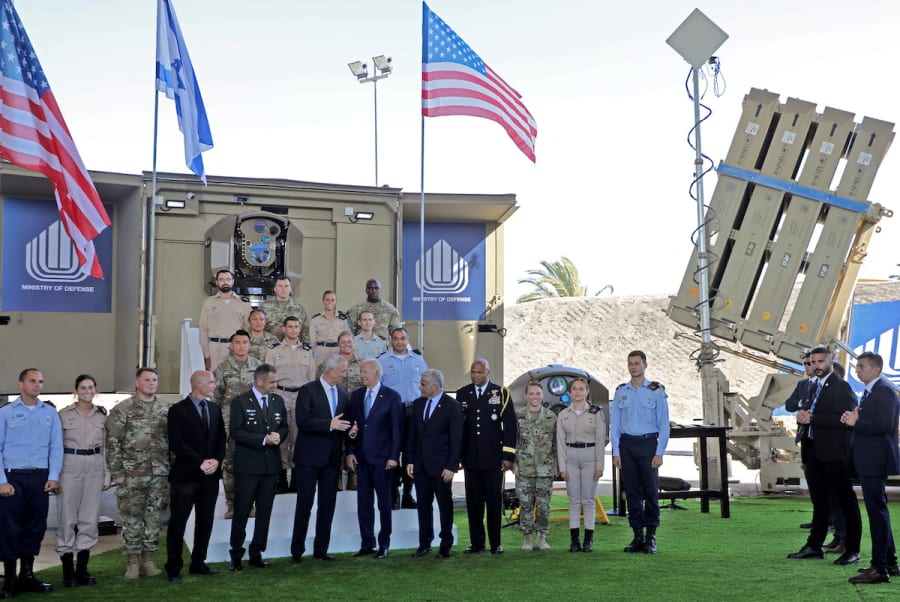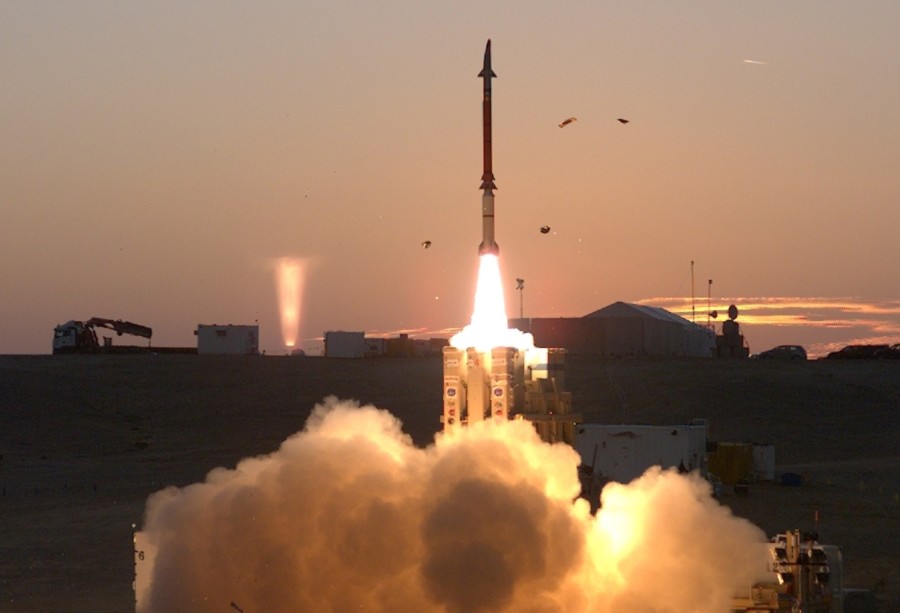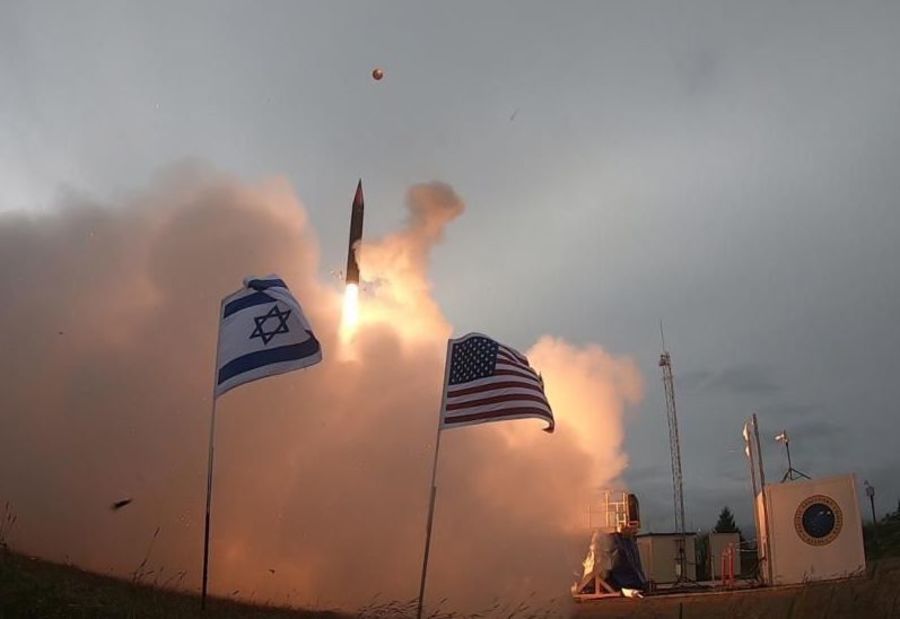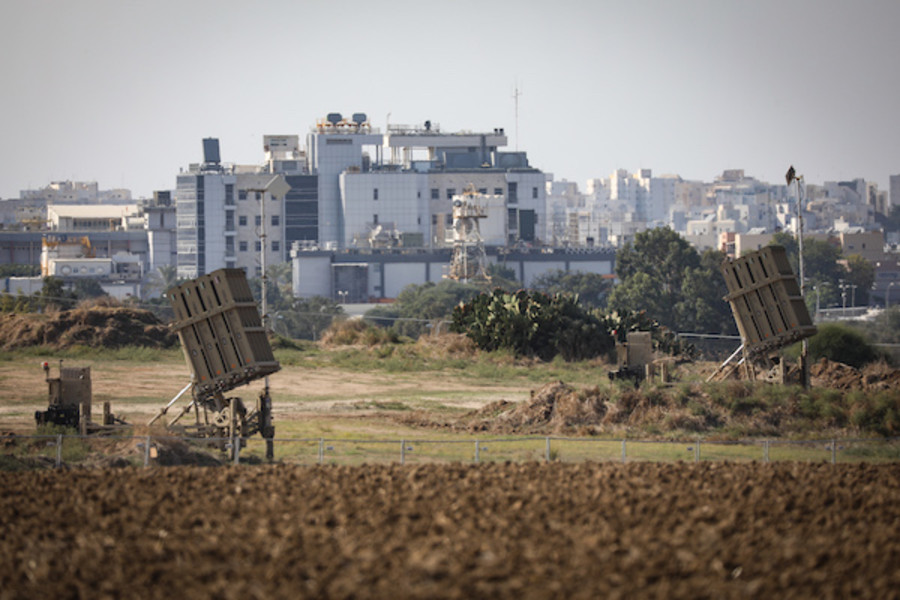US security aid to Israel: How much does the US give and how is it used?
Cutting defense aid to Israel means defense budget cuts for America

The subject of America's defense aid to Israel was recently brought into the broader public dialogue, following statements made by United States Republican presidential candidate Vivek Ramaswamy.
The increasingly popular GOP candidate was interviewed by podcaster Russell Brand in mid-February, during which Ramaswamy was asked whether his calls to reduce public funding to allies included the State of Israel.
“Would you include Israel in this defunding tenure that you discussed with regards to the W.H.O.? If you would end the war between the Ukraine and Russia, or at least stop funding it, what would you do with America’s ongoing funding of Israel?”
Ramaswamy responded that while the relationship between the U.S. and Israel “has advanced American interests,” he would consider reducing funding to Israel as part of a broader peace initiative, which he called Abraham Accords 2.0, designed to help “get Israel standing on its own two feet.”
Shortly after that interview, during the first U.S. Republican presidential debate, Ramaswamy was again questioned about his intention to cut aid to Israel.
While the nature of the debate left little opportunity for Ramaswamy to further explain his position, the debate did raise the broader issue of Washington's role in funding Israel's defense establishment and the nature of U.S. aid to Israel.

For many years following its establishment in 1948, Israel was receiving U.S. funding through programs meant to aid developing countries, often via the U.S. Economic Support Fund. Now, most of the aid to Israel is through foreign military financing (FMF).
After Israel’s founding, it was surrounded by hostile nations, which caused the Jewish state to operate like an island economy, as it could not share import costs with neighboring countries nor trade with them. Therefore, any goods that Israel was unable to manufacture by itself had to be imported.
The brand new nation was also receiving a significant number of new immigrants from Europe and the United States, as well as Jews fleeing Arab lands, which necessitated Israel's need for development aid.
Most of the $146 billion given by the U.S. to Israel between 1948 and 2020 was economic and developmental aid, with a significant amount of military assistance, as well.
As the Israeli economy began to grow, especially following the economic reforms of then-Israeli Finance Minister Benjamin Netanyahu, the nature of Washington's aid shifted to being largely directed toward defense and security.

The most recent Memorandum of Understanding (MOU) between the U.S. and Israel, signed during the Obama administration in 2016, gives Israel $33 billion in Foreign Military Financing (FMF) and $5 billion in missile defense funding for the fiscal years 2019–2028.
The MOU is intended to help Israel maintain its Qualitative Military Edge (QME) in relation to neighboring countries. It also removed an exemption from the previous agreement, allowing Israel to spend a percentage of the funding on fuel and its own domestic weapons industry.
The Obama Administration's memorandum also requires Israel to purchase U.S.-made defense products, such as the F-35 stealth joint strike fighter. The Israeli version of the fighter jet is believed to cost around $120 million per plane and is built by the U.S. defense giant, Lockheed Martin.
Along with the $3.3 billion FMF per year, Israel also receives $500 million in missile defense funding, which goes toward projects, such as the Iron Dome aerial defense system to counter the short-range and medium-range rockets used by Hamas and Palestinian Islamic Jihad terror organizations in Gaza, and the larger Katyusha rockets used by Iran's Lebanese-based Hezbollah terror-proxy group.
The missile defense funding also helps fund the production of Israel's David’s Sling Short Range Ballistic Missile Defense (SRBMD) program, as well as the Arrow 3 anti-ballistic missile system.
While the Iron Dome was initially developed from within Israel, David’s Sling was jointly developed by Israel's Rafael Advanced Defense Systems and U.S. defense contractor Raytheon, while Arrow 3 was jointly developed by Israel Aerospace Industries and Boeing.

Because these programs involve cooperation with U.S. defense firms, the use of those funds naturally involves spending from the U.S. defense budget.
In addition, the fact that these Israeli defense systems are jointly developed with the U.S. not only benefits America's defense department but also gives Washington a say in which countries are permitted to purchase the systems, as the U.S. is required to approve the sales of both David's Sling and Arrow 3 to other nations.
America's missile defense funding for Israel also allows the Jewish nation to replenish Iron Dome missiles on a more regular basis. Previously, when Iron Dome rockets were depleted during conflicts with terror groups, Israel had to formally request more funds from the U.S. if it didn't have sufficient funds to purchase more. And approval for the additional funding first had to go through Congress, which would often take time.
Having a set budget for missile defense funding allows Israel to replenish its Iron Dome missiles more effectively, including stockpiling missiles to prepare for future flare-ups and conflicts.

In addition to those two major defense funding agreements, the U.S. also provides funds for several other programs, including those designed to promote peace and reconciliation, as well as several research and development grants in leading universities, research facilities and hospitals.
Since 1973, the U.S. State Department has also been providing Israel with about $1.69 billion to help with the resettlement of new immigrants to Israel. Since many of the Jews emigrating from outside Europe and the U.S. have arrived, and continue to arrive, from areas of political and economic uncertainty, this is viewed as humanitarian aid.
The significant majority of U.S. financial aid to Israel is being spent in the U.S. economy because of the conditions of the MOU. The remaining U.S. funding to Israel is consistent with the type of grants and investments that Washington has made with other allied or friendly countries.
Of the $3,306,126,752 designated to Israel in 2023, some $3.3 billion is currently tied up in the FMF agreement. This leaves a little over $6.1 million per year for all other funding efforts.
Perhaps the realization of this is what led Ramaswamy to state a change of course regarding aid to Israel.
“The reality is that the $3 billion in aid that we give to Israel is a tiny drop in the bucket for the U.S. military budget," said Ramaswamy in an interview with Israel Hayom.
"A lot of that work is done here in the United States of America. It's actually accretive to the US and our interests. And so, in a certain way, it would be silly for us to want to skimp or cut that when in fact, it's not just in Israel's interest, but that's in our own interest, even nationally, in building our industrial base.”
The most recent report detailing U.S. foreign assistance to Israel can be found here.

J. Micah Hancock is a current Master’s student at the Hebrew University, pursuing a degree in Jewish History. Previously, he studied Biblical studies and journalism in his B.A. in the United States. He joined All Israel News as a reporter in 2022, and currently lives near Jerusalem with his wife and children.













